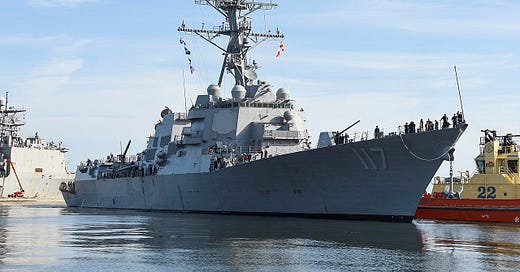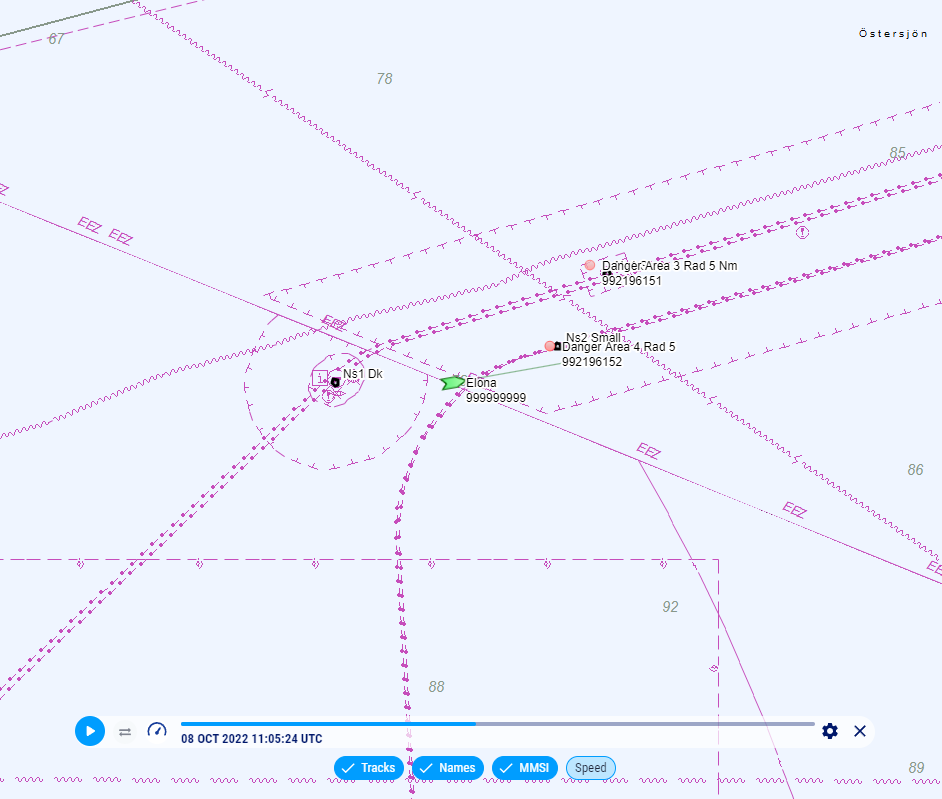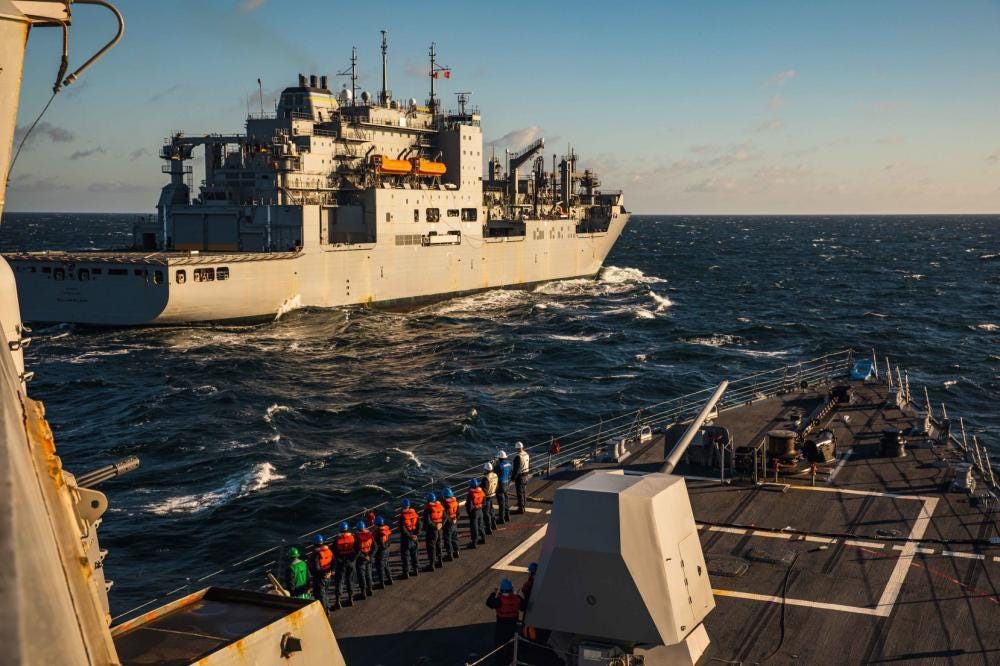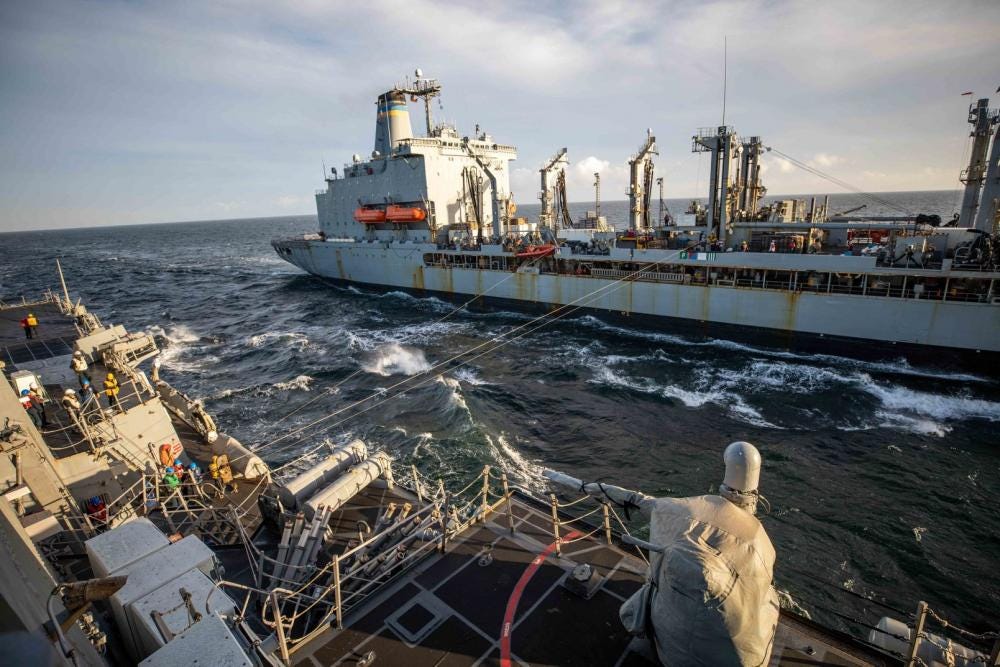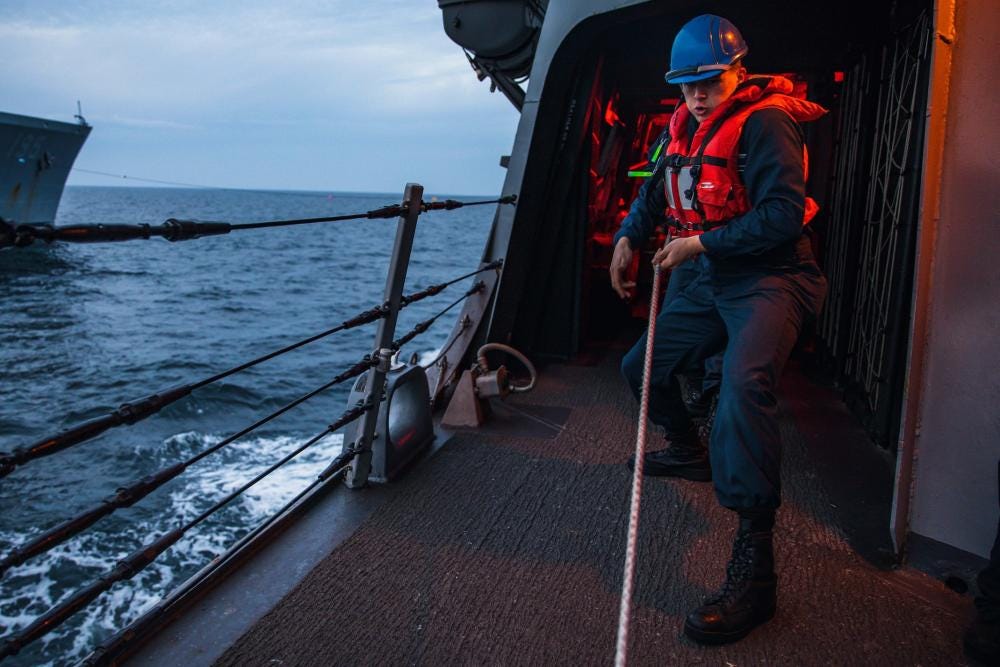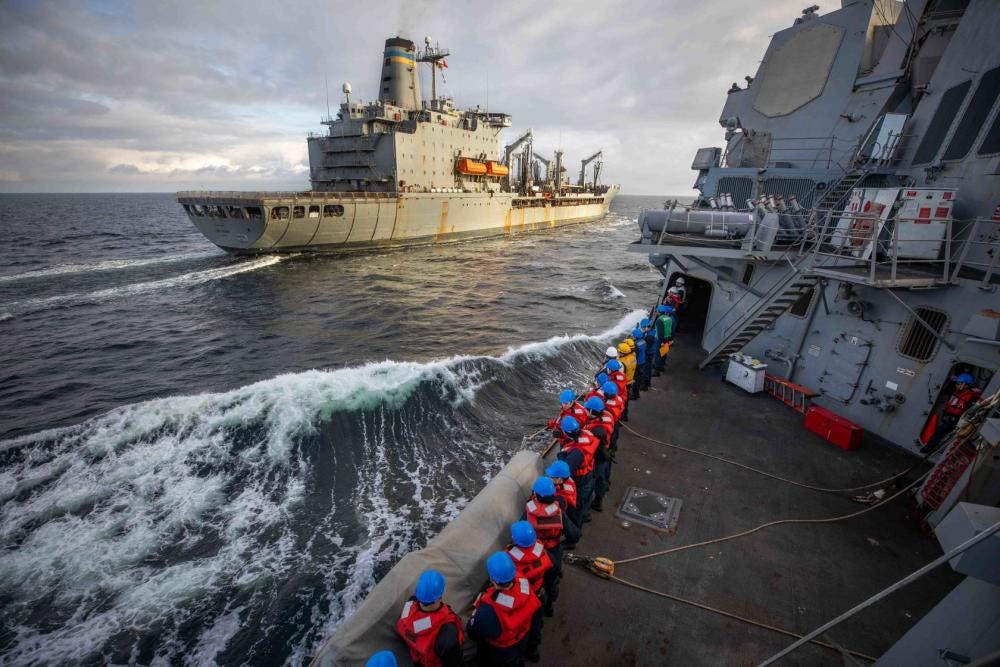Despite Deferring to the European Investigations, U.S. Destroyers Appear to Have Inspected All Nord Stream Sabotage Sites.
While there has been no announcement of a hands-on or first-hand U.S. investigation into the Nord Stream sabotage, evidence suggests that U.S. destroyers have inspected all the Nord Stream sites
If you enjoy my content, please consider supporting my work here and on Twitter with a premium Substack subscription.
There has been no official announcement from the United States that it is conducting its own investigation into the Nord Stream blasts. The United States has for a long time pointed to the ongoing investigations being performed by Germany, Sweden and Denmark when asked questions about the September sabotage of the Nord Stream pipeline.
This was done as late as the 8th March after The New York Times released their article stating that US intelligence officials had seen intelligence suggesting that a Pro-Ukrainian group could have been responsible for the sabotage of the Nord Stream pipeline. In response to this, White House National Security Council Spokesperson Adrienne Watson again stated that several European partner nations had ongoing investigations. There was again no mention of any direct first-hand U.S. investigation.

There is however evidence that the U.S. has conducted at least some form of direct first-hand investigation into the Nord Stream sabotage. The first piece of evidence comes on the 8th October 2022, where an unidentified ship using an invalid MMSI initially investigated the Danish Nord Stream 1 blast location for an unknown amount of time before moving to the Swedish Nord Stream 1 blast location.
The unknown ship would continue investigating the Swedish Nord Stream 1 location for several hours before once again disappearing off AIS. This invalid MMSI has previously been used by U.S. Navy warships. U.S. Navy warships very rarely operate with active AIS in the Baltic Sea unless absolutely necessary.
The ship in question is highly likely the U.S. Arleigh Burke-class guided-missile destroyer USS Paul Ignatius (DDG 117) which was active in the Baltic Sea during this time. As they operate without AIS active, it is not possible to continuously track their location.
The day prior on the 7th October, the USS Paul Ignatius was performing a replenishment-at-sea with the USNS William McLean. Images of this replenishment-at-sea were posted to the Defense Visual Information Distribution Service.
U.S. Navy auxiliary support vessels on the other hand do operate with AIS active and it is therefore possible to identify the location where this replenishment-at-sea took place. AIS data shows that the replenishment-at-sea happened from the 6th to 7th October approximately 40km south of the main Nord Stream sabotage location.
The next piece of evidence comes from Danish government documents acquired by the Danish newspaper Ekstra Bladet acquired in February. These documents showed that on the 25th October, the US “unofficially” requested permission from Denmark to send a destroyer to inspect the Southern NS2 leak location. This is likely due to the fact that the Northern locations were already inspected on the 8th October. As the U.S. themselves requested permission for this, it seems unlikely that it was done as part of the German or Swedish investigation.
This time there were no AIS tracks over the Southern Nord Stream 2 leak, meaning that there was no way of knowing exactly when the site was inspected by the U.S. destroyer. I believe that the site was inspected by either the USS Paul Ignatius (DDG 117) or the USS Roosevelt (DDG-80).
The USS Roosevelt entered the Baltic Sea on the 16th and left on the 27th. While in the Baltic Sea it had its AIS off for the entire duration making it impossible to accurately locate.
Again though, there are images available on the Defense Visual Information Distribution Service that allow us to track down its whereabouts. The USS Roosevelt performed a replenishment-at-sea with the USNS Leroy Grumman on the 18th October.
Using the same method as last time it is possible to locate the USNS Leroy Grumman and as a result the USS Roosevelt. The replenishment-at-sea took place approximately 40km south of the Southern Nord Stream 2 leak that U.S. requested permission to investigate. This replenishment-at-sea was a week before the request came it, but it means that the USS Roosevelt was in the area.
The day prior the USS Paul Ignatius also performed another replenishment-at-sea from the USNS Leroy Grumman.
On the 25th or 26th October the USS Roosevelt again performed a replenishment-at-sea with the USNS Leroy Grumman. This was one day after the U.S. “unofficially” requested permission to investigate the Southern Nord Stream 2 site.
This replenishment-at-sea was again likely done approximately 40km south of the Southern Nord Stream 2 site.
While no official hands on U.S. investigation of the Nord Stream sabotage has been announced, it looks very likely that all the sites were inspected first hand by U.S. Arleigh Burke class destroyers. We do not at this time know what these inspections discovered.
Thanks to PeterDunn for bringing my attention to the unknown MMSI contact on the 8th October

